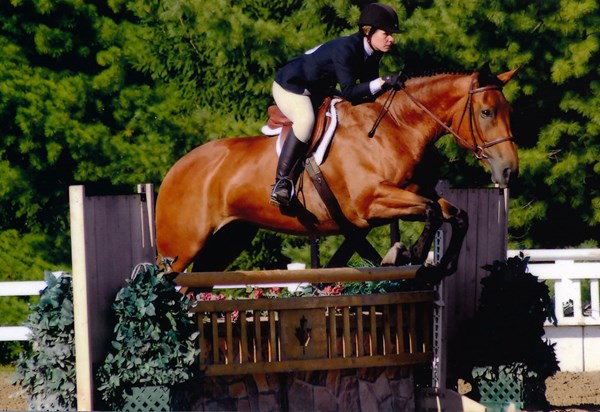
The conformation of our second rider is different from our first. This rider has a shorter leg and longer upper body. Like grand-prix rider Katie Monahan Prudent, many riders who don’t have a long, tall body conformation that is ideal for riding still do wonderfully. This rider has a very solid position and good basics. The angle behind her knee is tighter than that of our first rider so she’s not reaching for her stirrup. The correct length also helps her drive down her heel with a flexed ankle. Her toes are turned out and her calf is in contact with the horse.
Her seat is out of the saddle just the right amount. She is not too high or ahead of the pommel. Her eyes are up and ahead. Her loins are a little too soft and she’s bordering on a roached back. She’s showing a good long release, though to be absolutely correct, she needs a looser rein to give her horse absolute freedom. This release allows her to support her upper body on her horse’s neck but still have some control. She could start to practice the automatic release—also called jumping out of hand, where there is a straight line from the elbow to the horse’s mouth—over small crossrails.
This seems like a pleasant, sweet horse with a kind eye and loppy ears, though he doesn’t have an alert, conscientious expression, so he might be a bit lazy. He’s very symmetrical with his front legs but his knees are pointing down just a little, though it’s not a safety issue. He has a big neck and loaded shoulder, so he looks like he could be heavy in the mouth.
The horse looks well cared for. He’s the right weight. The turnout isn’t too bad, but it could be better. He’s beautifully braided, but the rider’s boots are dirty, the saddle looks like it needs to be cleaned and oiled and the horse’s feet could be painted.
This article originally appeared in the May 2015 issue of Practical Horseman.










